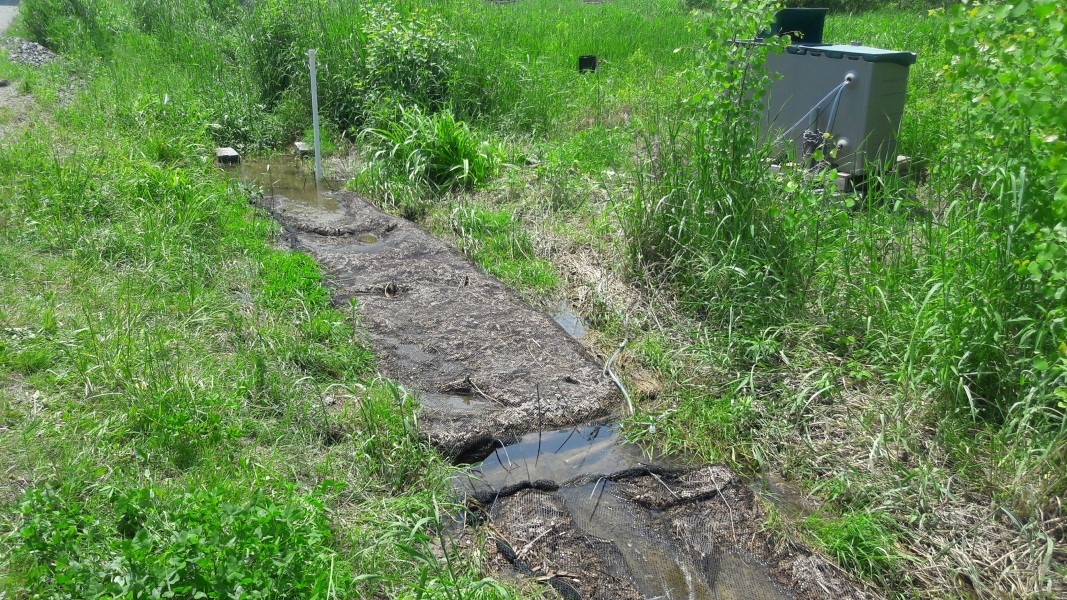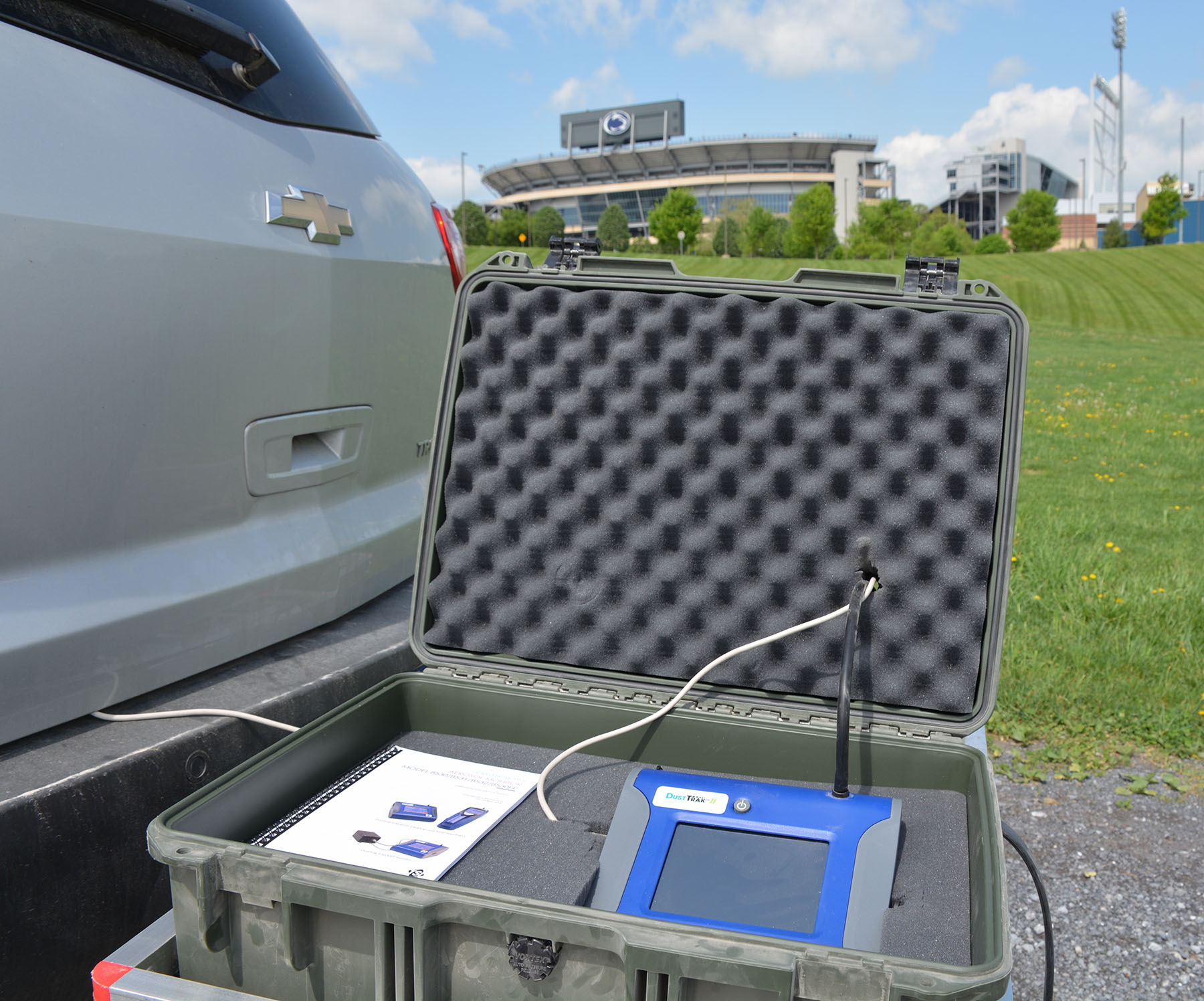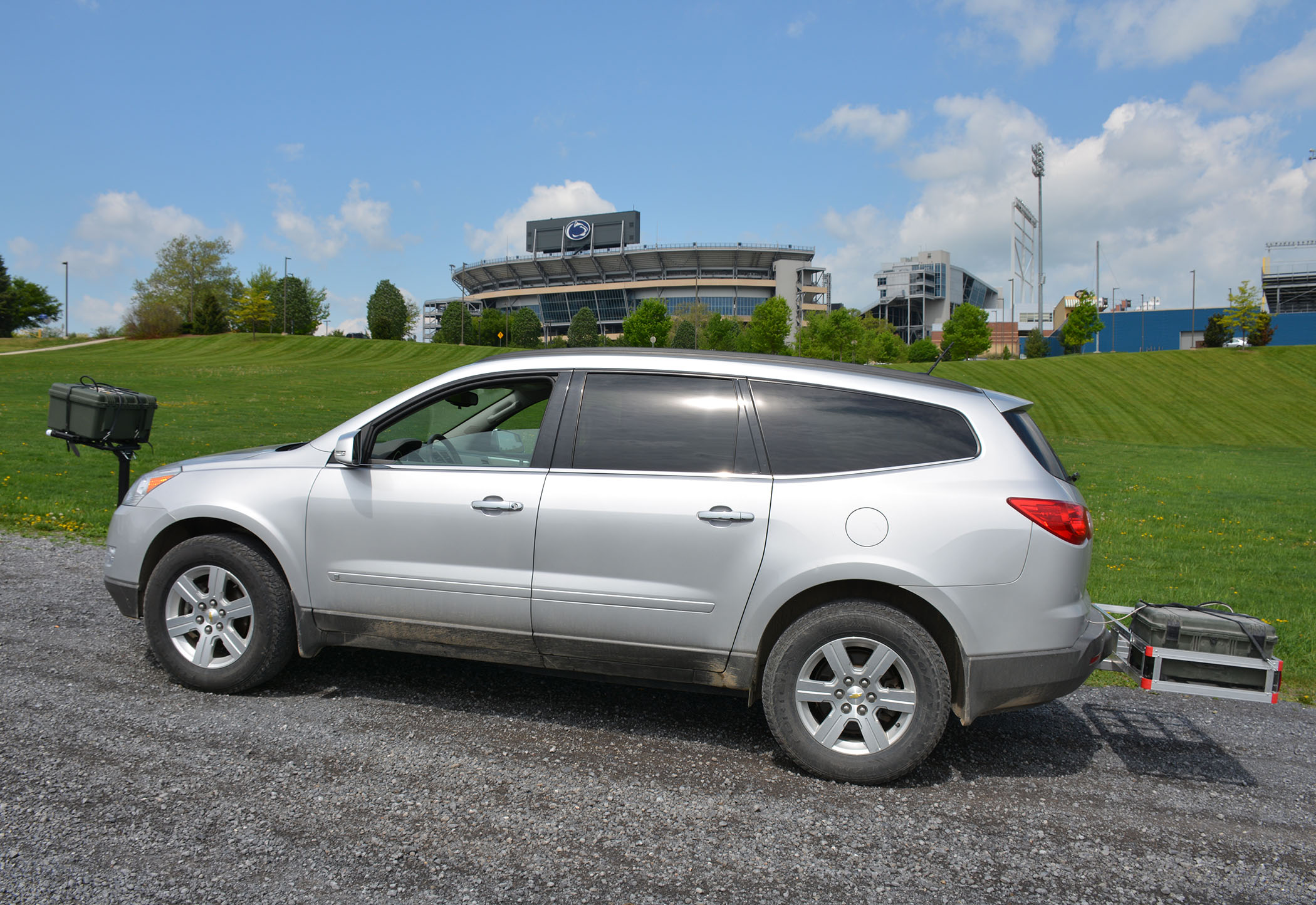Current Research
On-going and planned research projects at the Center.
In-Ditch Nitrogen Removal Using Woodchip Bioreactors
Starting in 2018, the Center for Dirt and Gravel Road Studies and Cornell University partnered with the Bradford County Conservation District to demonstrate the use of woodchip bioreactors in roadside ditches to treat agricultural nitrogen at the field edge. This two-year project funded by the Natural Resources Conservation Service (NRCS) Conservation Innovation Grants (CIG) program project built on earlier successes utilizing the rural roadside ditch networks as the basis for a low-cost agricultural lands filtration system. The results to date have shown significant nitrogen removal using in-ditch woodchip bioreactors to improve water quality from farm field runoff and to enhance conservation practice standards. This project has also demonstrated that the existing road ditch infrastructure that exists across Pennsylvania and the entire country can be used as a watershed-wide nutrient removal system.
Woodchip bioreactor installed in ditch with monitoring equipment.
Resources
- Bioreactor Fact Sheet (734 KB): Fact sheet for using scaled-down woodchip bioreactors in roadside ditches to filter out dissolved nitrate (draft) (11/18)
- NRCS CIG Final Report (5.42 MB): Retrofitting the Rural Roadside Ditch Network to Treat Nitrogen from Agricultural Runoff Using Woodchip Bioreactors
Dust Monitoring
The Center with equipment support from Pennsylvania DCNR and system setup and support from Penn State’s Battery Application Technology Testing Laboratory has developed a vehicle-mounted particulate monitoring system for unpaved roads. The primary monitoring instruments consist of two TSI DustTrak aerosol monitors that measure particulate matter less than 10 microns in size (PM10). The mobile sampling device will be used to quantify relative dust loads from different unpaved road surfaces in Pennsylvania. The data generated from this project will be used to determine the dust suppression qualities of the Center’s Driving Surface Aggregate (DSA). In addition, the data will be used to develop a robust predictive model that can identify watersheds with high dust load potential and predict responses to changes in the unpaved road network.
From left to right: Eric Chase adjusting the dust monitoring equipment,
the dust monitoring equipment, and the dust monitoring equipment attached to a vehicle.
- Research Update (722 KB): Real-time Dust Monitoring Research Update (4/17)
Maintenance Grading
In summer 2015, the Center will undertake a maintenance grading study to determine the optimal procedure to rework a DSA surfaced road. The goal of the study is to determine which method of grading can return the road surface to properties most similar to a new DSA placement. The study will compare the density and particle size distribution after grading the road surface with a straight grader blade versus a carbide tooth grader blade. It is anticipated that the data from the study will assist the DCNR and local municipalities in determining the optimal way to maintain a DSA surfaced road.
Marcellus Shale Gas Sediment Control Project
The Center is participating in the National Fish and Wildlife Foundation funded Marcellus Shale Gas Sediment Control Projectled by the Susquehanna River Basin Commission (SRBC). The project is focused on reducing the impacts of road sediment on streams in the Marcellus Shale impacted areas of the Susquehanna River Basin. The Center will assist the SRBC in the assessment of roads and their potential to impact water quality by using a modified road assessment methodology developed by the Center. The Center will also participate in evaluating best management practices to reduce the impacts of road sediment. Field work is planned for late summer 2015.
Economic and Environmental Benefits of Driving Surface Aggregate (DSA) for Unpaved Roads
The Center is participating in a project to demonstrate the effectiveness of DSA as a surface course for unpaved roads on Federal lands. The project will deploy DSA at three Federal lands sites in order to quantify the benefits of improved surfacing for extending road life, reducing maintenance costs, and protecting natural resources. The Center will help guide the aggregate selection and placement, and participate in performance assessment through dust monitoring and sediment measurement using the Center’s dust monitors and rainfall simulator. The project will begin in fall 2015.








